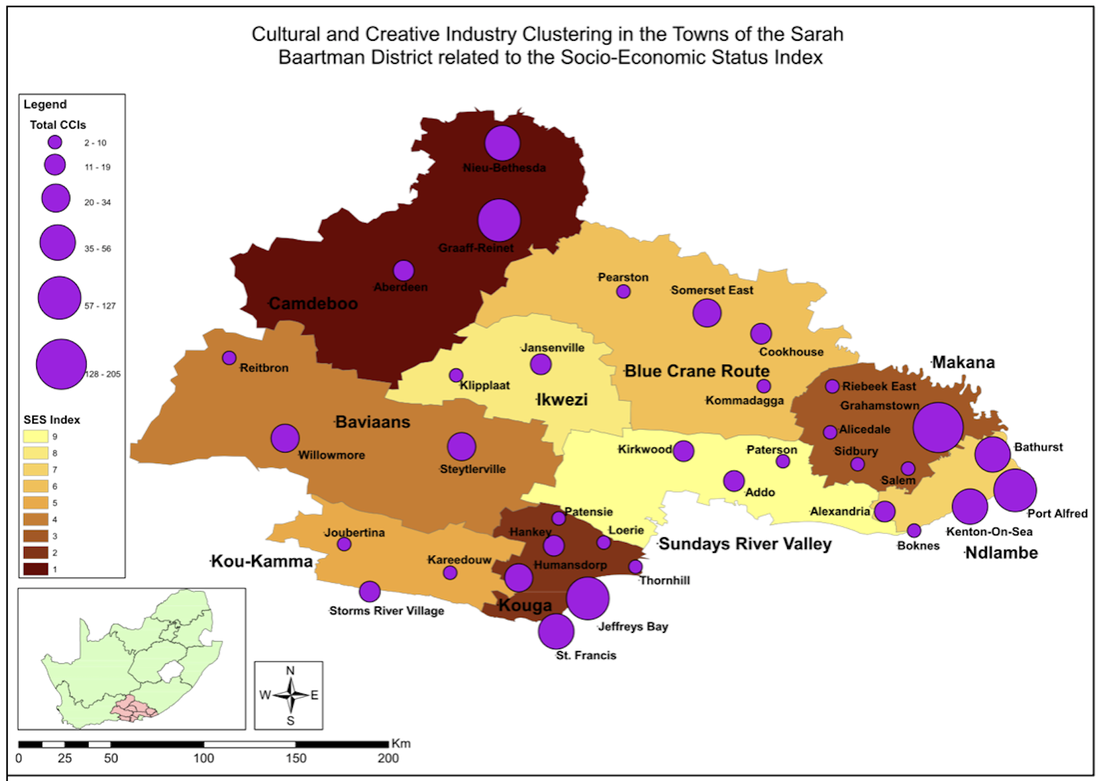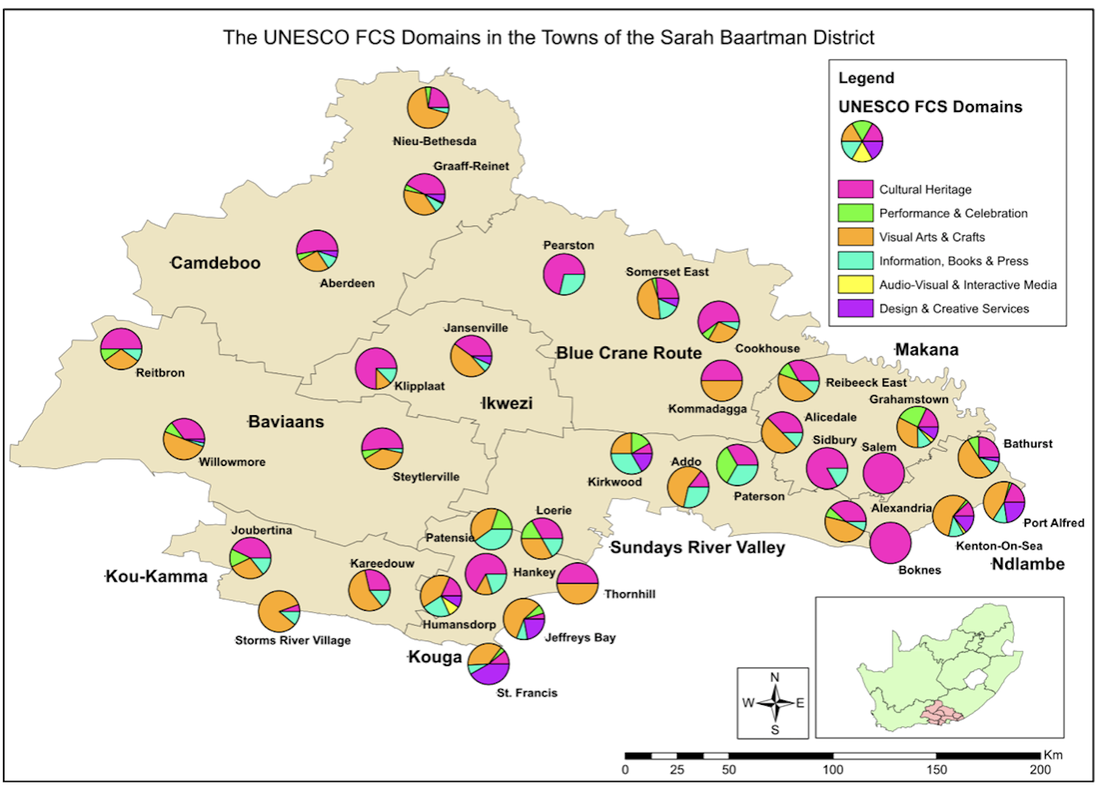|
The research question It is increasingly recognised that the cultural and creative industries (CCIs) can play an important role in economic growth and development. Governments around the world, including South Africa, are implementing culture-led economic growth and development strategies on national and regional scales. CCIs tend to cluster around large cities because of existing hard and soft infrastructure such as networking advantages and access to skilled labour, however, much less is known about the potential of the CCIs to drive rural development. Using mapping techniques and indicators, we investigated the relationship between the CCIs and socio-economic development in a more rural area of South Africa. The research context The Regional Government of the Sarah Baartman District (SBD) of South Africa’s Eastern Cape has identified culture as a potential new economic driver. Establishing a new development path is necessary as the former economic mainstay, agriculture, has declined in the region creating poverty and unemployment problems. However, the SBD has only small towns which, according to the literature, are not suited to CCI clustering. Despite this, there is evidence of cultural clustering in some of the SBD’s small towns like Nieu Bethesda and Bathurst. Methods used We conducted an audit of the CCIs in the district and used geographic information systems (GIS) to map their locations. We used the UNESCO Framework of Cultural Statistics (FCS) domains in order to group the CCIs, and location quotients to investigate the extent to which clustering has occurred in small town settings. To investigate the relationship between CCI clusters and development, we used census data to construct an index of the socio-economic status (SES) of each municipality within the District, and ranked them from most to least developed. Using GIS, information on the number and distribution of CCIs was overlaid with the SES index ranking. The results The audit identified 1 048 CCIs operating in the district and determined that clustering is possible within some small towns, depending on their demographic, economic, social, geographic and historic characteristics. Visual Arts and Crafts and Cultural Heritage were prominent throughout the district while Design and Creative Services and Performance and Celebration had small regional concentrations.  Examining the relationship between socio-economic development and the presence of the CCIs showed a general positive relationship between CCIs locating in larger numbers (clustering) in areas with higher socio-economic development. The direction of causality cannot be determined without data over a longer time period, but it may be that a threshold level of socio-economic development is needed before the CCIs can begin to cluster and drive the ‘virtuous cycle’ of growth and development. Implication for practice The research showed that cultural clusters can form in more rural, small-town areas, and that the presence of the CCIs is linked to better socio-economic development levels. For small towns where clusters exist, or the potential for cluster formation is present, the domains in which the town holds a comparative advantage should be pursued for local economic development (LED). However, with limited resources, effective regional cultural policy needs to build on existing cultural clusters and take into account the specific domain and locational characteristics of that region or town. The first step in the development of good regional cultural policy is thus a comprehensive cultural mapping exercise to determine which cultural domains are represented and where they are located. The researchers acknowledge the financial support of the South African Cultural Observatory, which is a research organisation funded by the South African Department of Arts and Culture. Copyright for all maps is held by Fiona Drummond and a copy of her Masters thesis will be available shortly on the Rhodes University Library Website.
0 Comments
In this blog Lauren England (PhD Candidate, King's College London) focuses on the themes that emerged from the literature on two forms of craft production in Nigeria – ceramics and textiles – and their role in both micro-enterprise development and in industrial manufacturing.
Craft is an interesting discipline as it spans both artistic and industrial production and can combine creativity, design, science and technology. There is a long history of utilitarian craft production in Nigeria following a traditional small to medium enterprise production model. Key themes that have emerged from the literature on craft production in Nigeria are:
|
Network Research BlogThe blog aims to collect ideas, reflections and updates from researchers working on creative economies in Africa. If you are interested in contributing please get in touch via our contact form Archives
September 2021
Categories
All
|



 RSS Feed
RSS Feed




